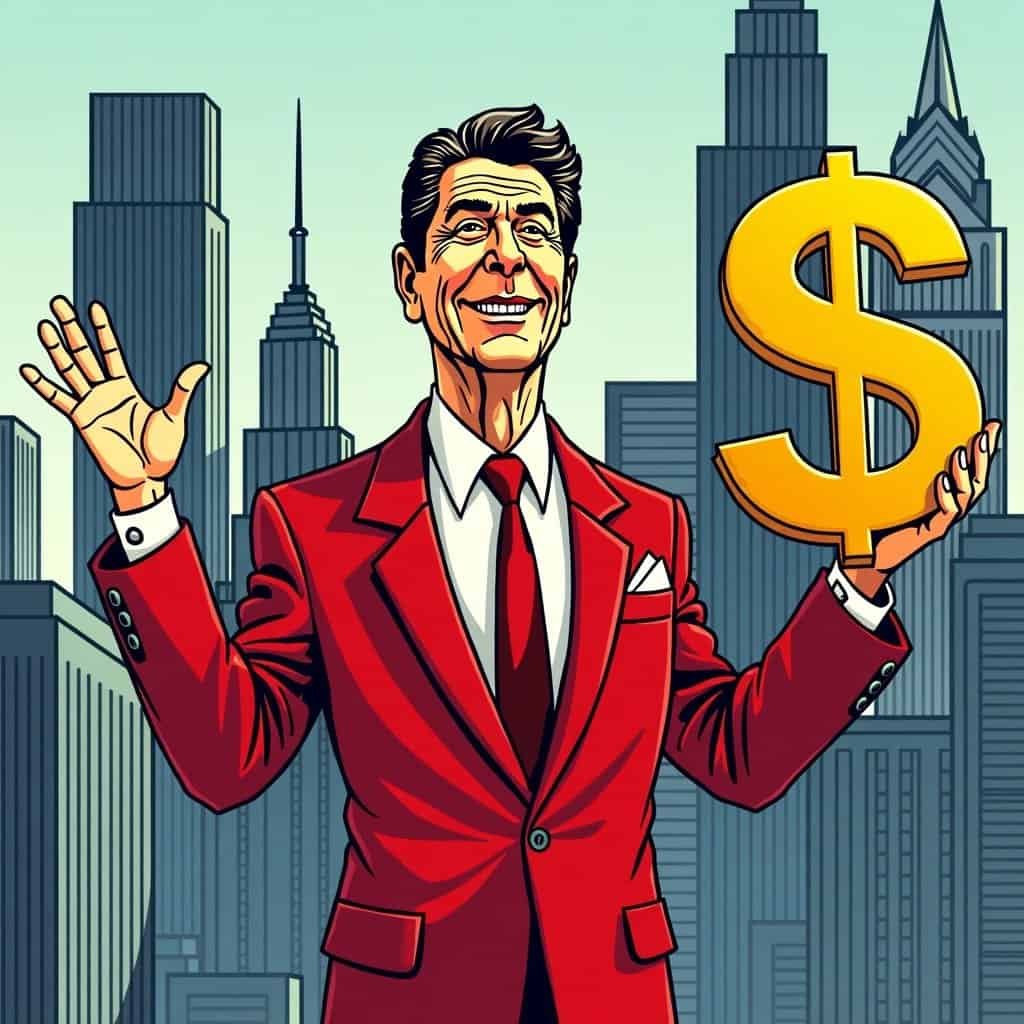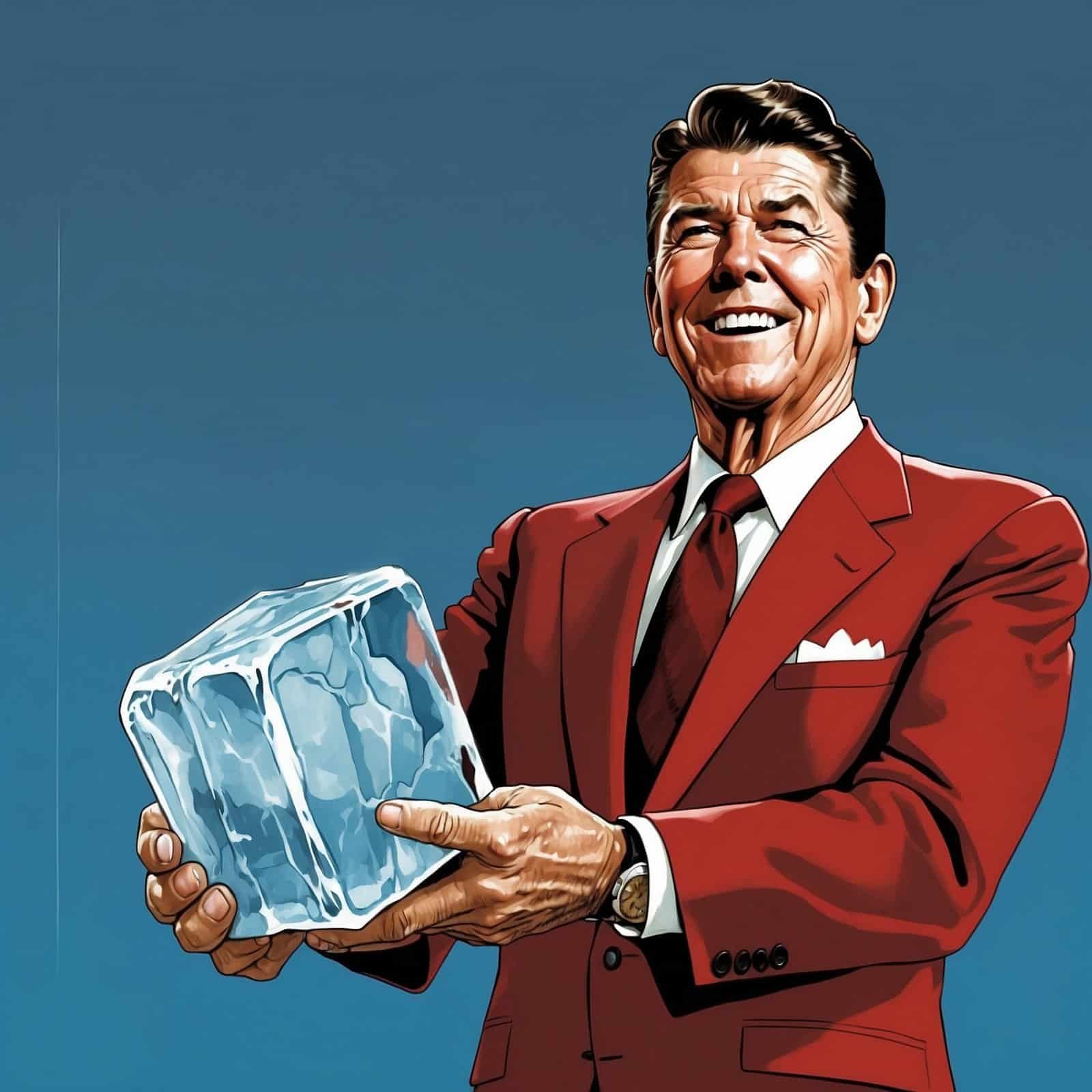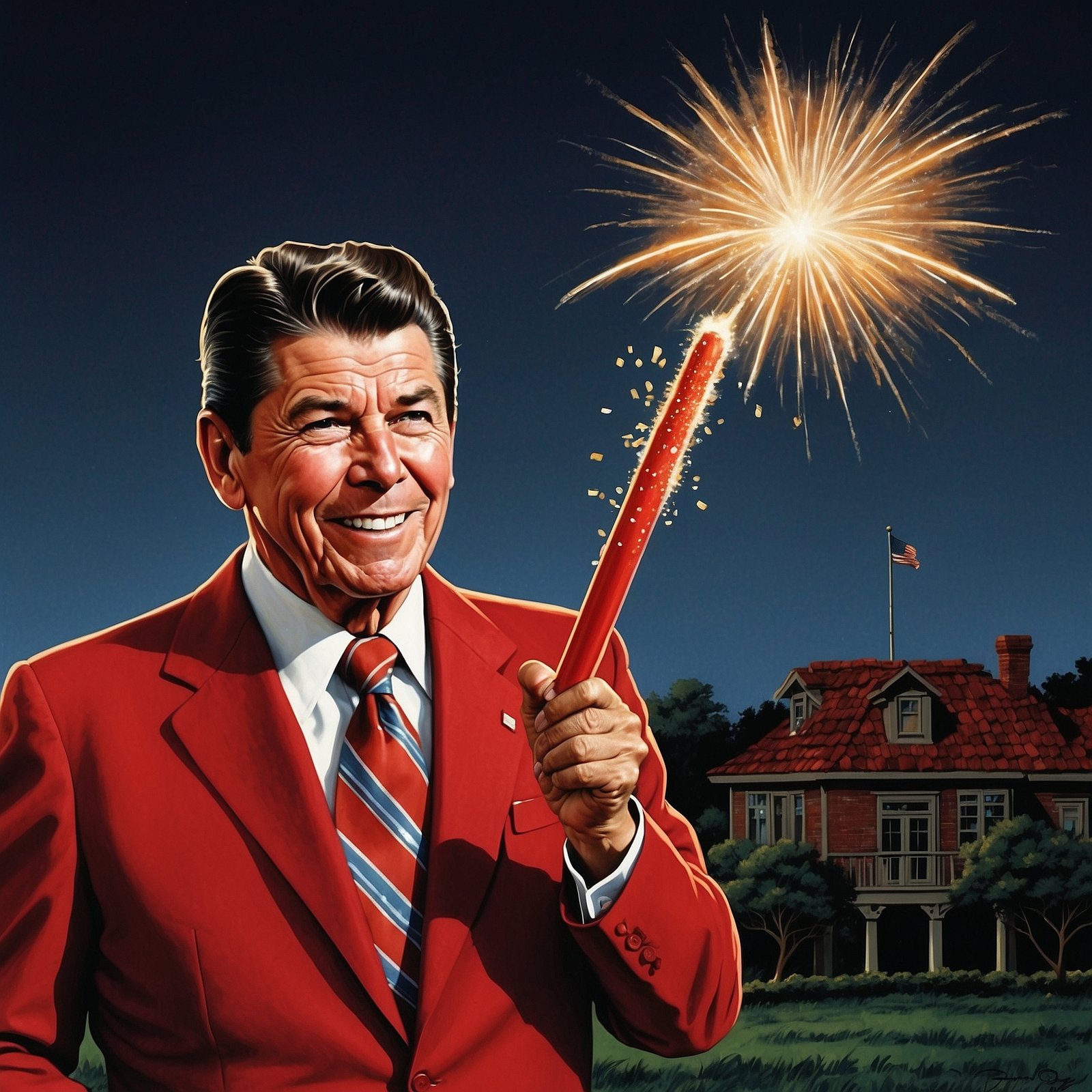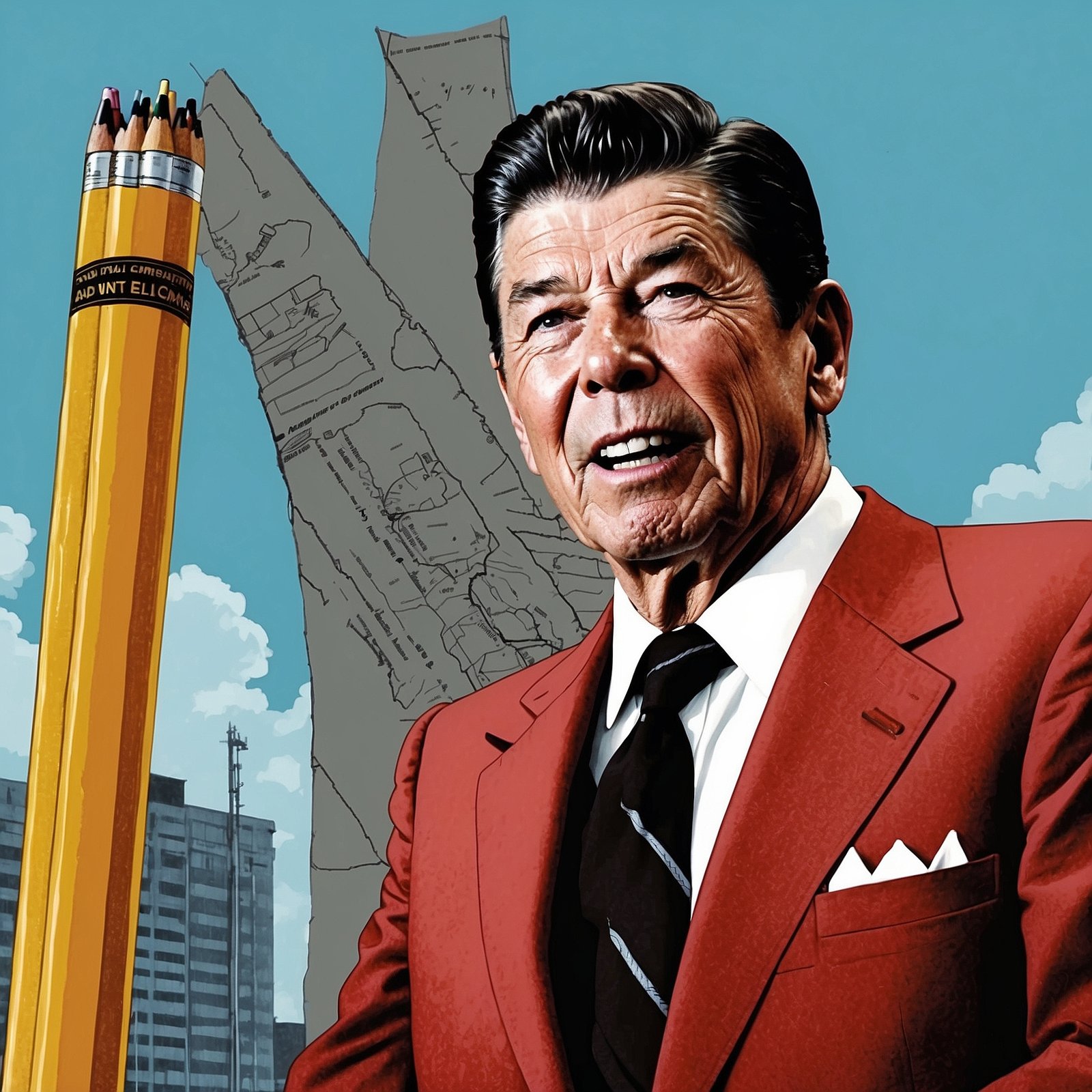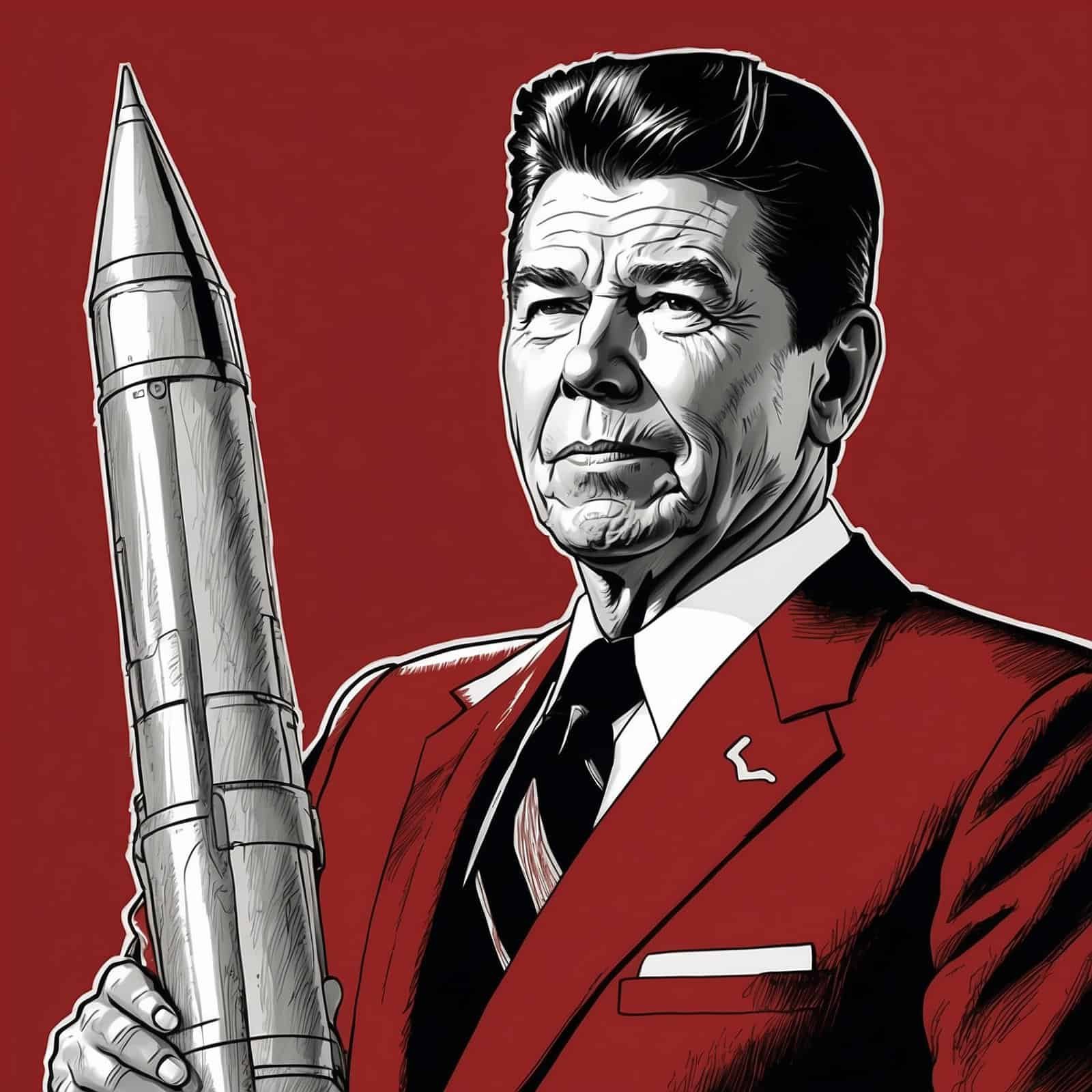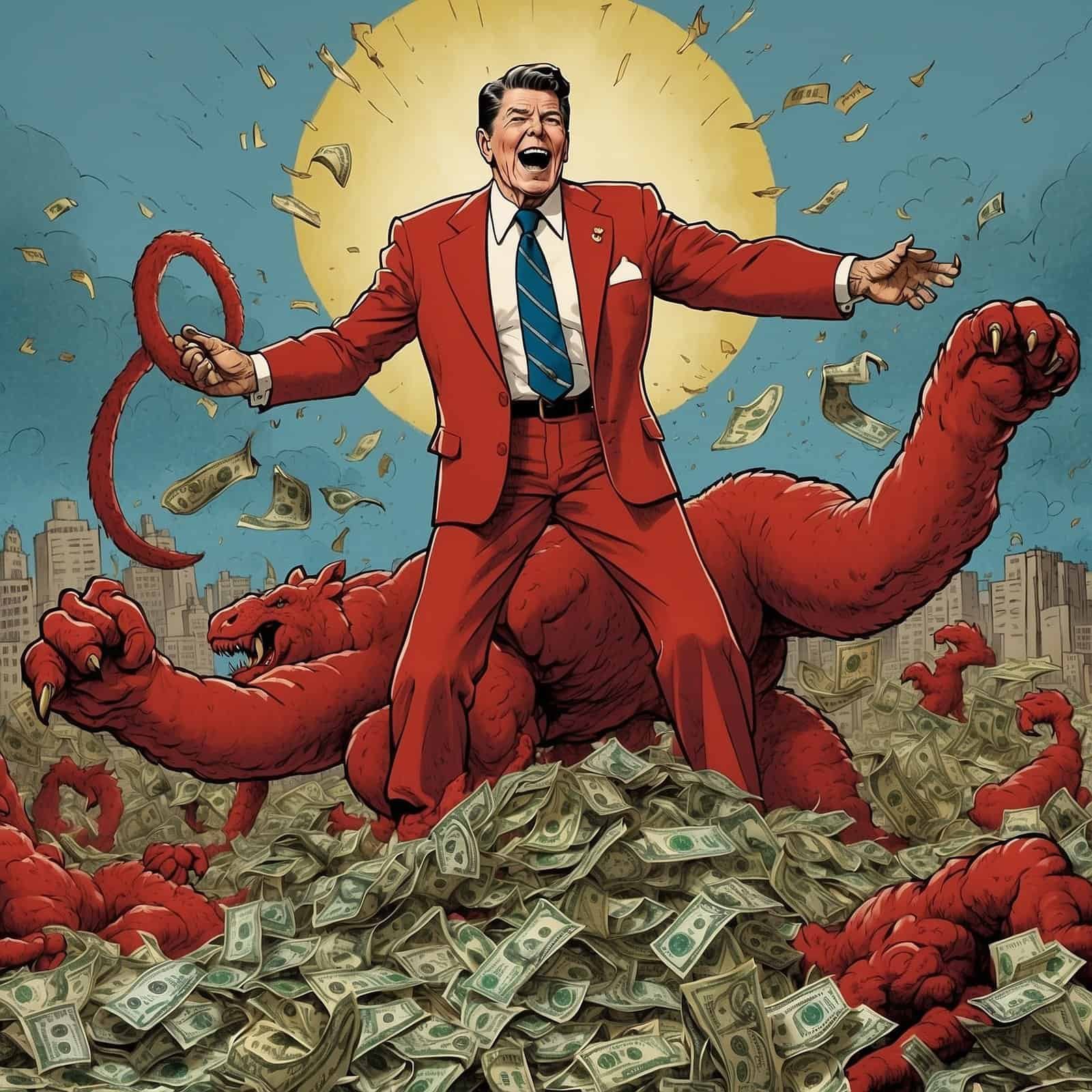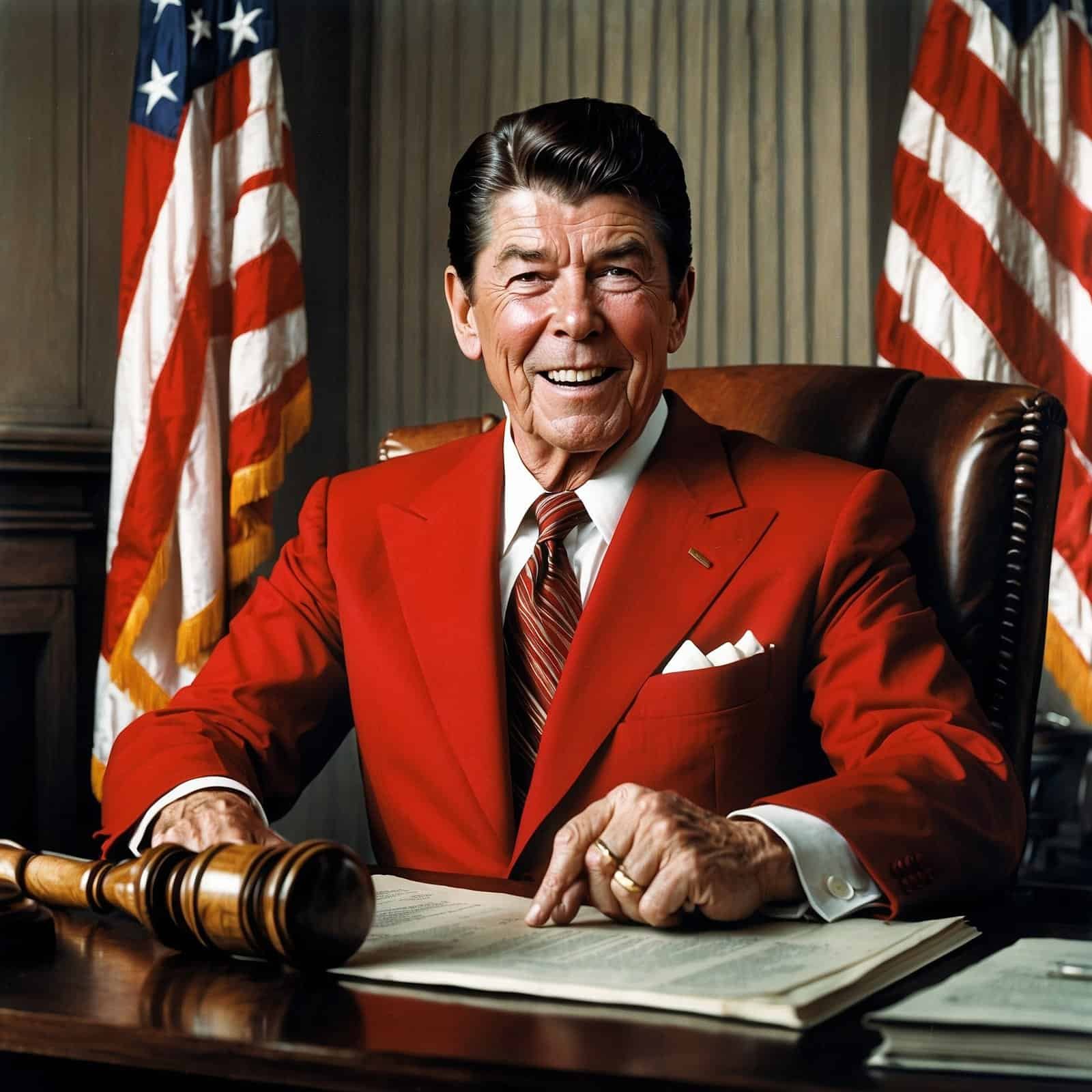Ah, Ronald Reagan. The name alone can make conservatives smile faster than a tax cut on April 15th. Known as ‘The Gipper,’ Reagan’s presidency was a bright spot for private sector growth, a time when the government took a step back to let businesses do what they do best: create, expand, and hire. But what was it about Reagan’s approach that made businesses thrive? Let’s take a trip down memory lane, with stops at Economic Growth Station and Innovation Junction.
What’s the secret sauce? It’s straightforward. Less government meddling and more freedom for entrepreneurs and businesses. Reagan cut taxes, dropping the top income tax rate from 70% to 28%. Picture keeping most of your income instead of handing over nearly three-quarters to the Feds. This wasn’t just about making the rich richer; it was about creating a space where businesses could grow and create jobs for everyone.
Now, compare that with our friends on the left. Their fondness for higher taxes on businesses and the wealthy is like my appetite for Brussels sprouts—non-existent. They say it’s about fairness, but let’s be real. Higher taxes put a damper on investment and growth. When Uncle Sam takes a bigger piece of the pie, there’s less to go around for new ideas and job creation. And that hurts everyone, especially those at the bottom of the economic ladder.
Reagan’s Economic Approach
Reagan’s strategy was a masterclass in boosting the economy. Remember when Federal Reserve Chair Paul Volcker and Reagan teamed up to tackle inflation? Think of it like Batman and Robin fighting the Joker (well, inflation in this case). They used tight monetary policy and kept a close eye on government spending, setting the stage for stable, long-term growth. The economic boom during Reagan’s years wasn’t a fluke; it was bound to happen with smart economic policies.
Reagan’s Economic Policy Highlights
- ✅ Tax cuts: Top rate reduced from 70% to 28%
- ✅ Deregulation: Cut red tape in various industries
- ✅ Tight monetary policy: Fought inflation
- ✅ Controlled government spending
Let’s not forget deregulation. The term might sound as exciting as watching paint dry, but it meant cutting through the red tape that was holding businesses back. From airlines to telecoms, deregulation opened the door to competition and innovation. Picture a wild west, but instead of cowboys, it was entrepreneurs blazing trails in areas previously bogged down by bureaucratic muck. And who came out on top? Consumers. More competition meant more choices, better services, and even lower prices. It was a win all around.
Tangible Results
These policies weren’t just good in theory; they delivered real results. Unemployment dropped from 7.5% when Reagan took office to 5.4% by the time he left. Plus, the Gross Domestic Product (GDP) grew at an impressive average annual rate of 3.5%, putting more money in American families’ pockets. His policies showed that when you let people keep more of what they earn and cut unnecessary rules, you really unleash the power of the private sector.
Economic Indicators During Reagan Era
| Indicator | Before Reagan | After Reagan |
|---|---|---|
| Unemployment Rate | 7.5% | 5.4% |
| Average Annual GDP Growth | – | 3.5% |
In contrast, progressive economic policies often involve raising taxes and adding regulations, which might sound great if you’re a fan of big government. But here’s the catch. Higher taxes make it less appealing for businesses to invest, and more regulations mean more hoops to jump through, slowing down growth. You end up with a scenario that’s about as fun as watching paint peel—slow, painful, and ultimately boring.
Addressing Criticisms
And let’s talk about the wealth gap myth. Critics argue that Reagan’s policies simply let the rich get richer. Well, even if the wealthiest did see their fortunes grow, so did the fortunes of those at the bottom. The rising tide indeed lifted all boats. Jobs were plentiful, wages grew, and living standards improved across the board. Compare that with liberal policies that redistribute wealth. Sure, the checks might get bigger at first, but as businesses pull back, the economy slows down, and those checks? They become just pieces of paper.
So, the next time someone tries to sell you the idea that big government and high taxes are the path to prosperity, just smile and remind them of the Reagan era. Tell them how freeing up the private sector and allowing individuals to keep more of their hard-earned cash led to unprecedented growth, job creation, and innovation. After all, history occasionally needs a refresher on how sweet conservative values can be when they get a fair shake.
As the Gipper himself might say, enjoy the journey, keep the faith, and remember that the best days are still ahead. After all, it’s a great day to be an American!
